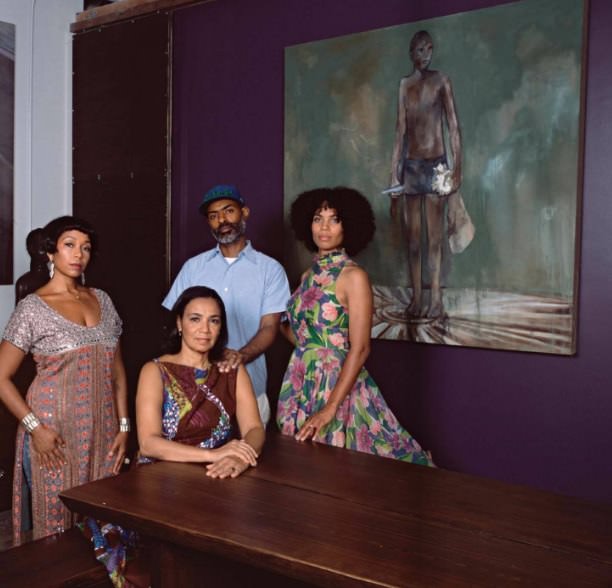How a family-run storefront art space became one of Los Angeles’s most vital cultural forces. By Diane Solway

The night after the 2016 U.S. presidential election, Moonlight director Barry Jenkins made his way to the Underground Museum, a buzzy cultural hub and alternative art space in the predominantly black-and-Latino neighborhood of Arlington Heights, in Central
Los Angeles. Walking into the small storefront space for a post-screening Q&A, he saw few viewers inside and assumed that distress over the previous night’s outcome had made everyone stay home. Then he stepped outside into the garden and found 250 people packed tightly together on blankets on the lawn. They had just watched Moonlight on the outdoor screen and were eager to talk—not about craft or behind the-scenes stuff, as they typically did at Jenkins’s Q&A’s, he says, but about how they felt. Jenkins recalls it as the most meaningful night of the movie’s rollout.
“I was struck by what a diverse crowd it was—tons of black folks, people from the neighborhood, white, Latino, Asian. And I thought, This is America,” says the director, whose film went on to win the Oscar for best picture. “Nothing could replicate the feeling that we had that night. It was almost like group therapy, all of us just out there under the stars, witnessing this thing we’d made and using it to bring us together.”
This story is from the December 2017 edition of W Magazine.
Start your 7-day Magzter GOLD free trial to access thousands of curated premium stories, and 8,500+ magazines and newspapers.
Already a subscriber ? Sign In
This story is from the December 2017 edition of W Magazine.
Start your 7-day Magzter GOLD free trial to access thousands of curated premium stories, and 8,500+ magazines and newspapers.
Already a subscriber? Sign In